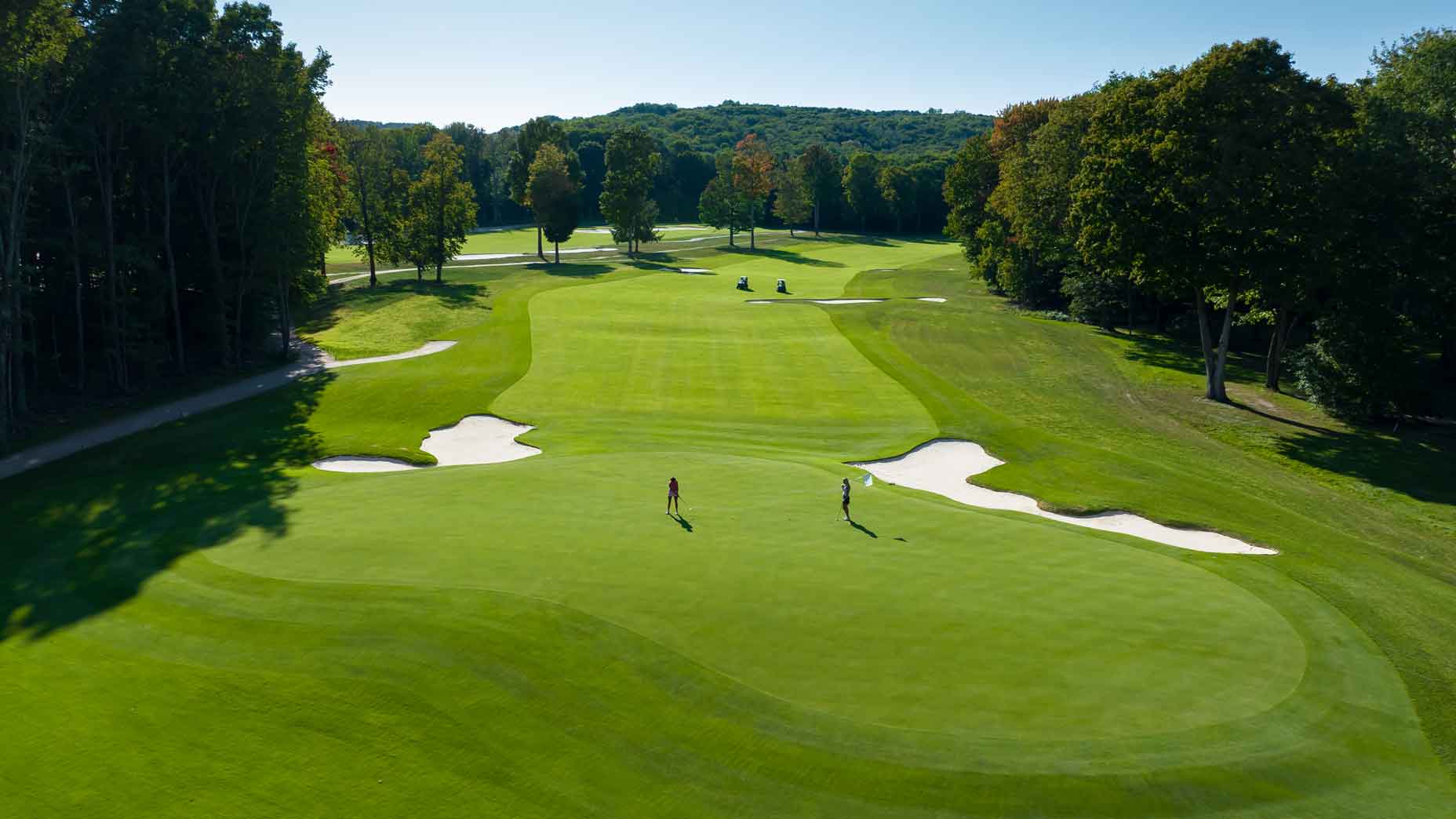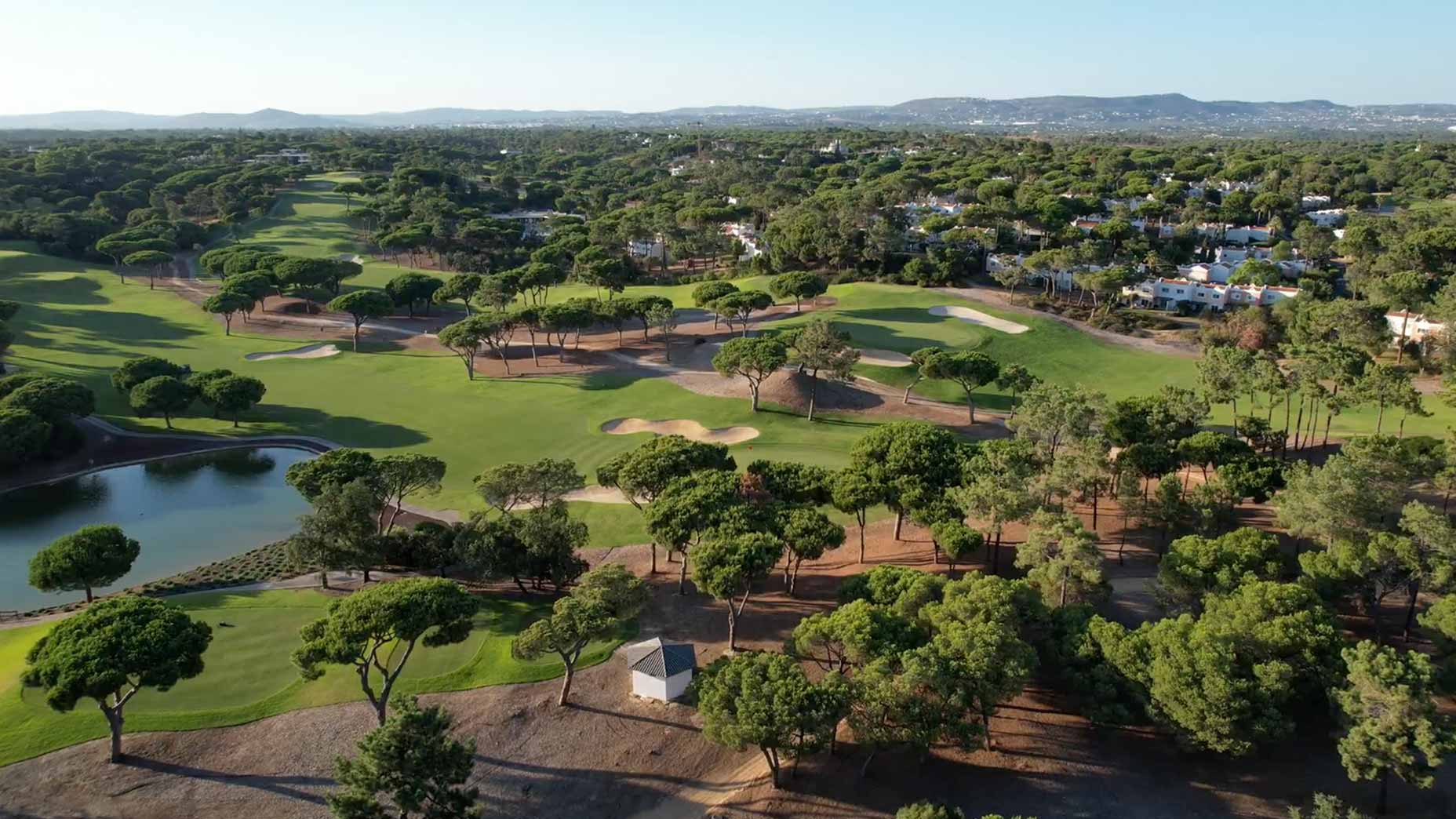If you think that Donald Ross greens are tough to putt, try replicating them. That work began in Northern Michigan decades ago.
Billed as the world’s only 18-hole tribute to the famed Golden Age designer, Donald Ross Memorial, at Boyne Golf resort, first opened for play in 1989, the brainchild of Boyne’s late founder, Everett Kircher.
“(Kircher) believed that Ross was the greatest designer of his day, and that more people should have a chance to experience his work,” says Bernie Friedrich, director of golf course renovations and development for Boyne. “That was the goal. To identify great holes that a lot of golfers would never have the opportunity to play, and find a way to fit them into our terrain.”
Friedrich would know. He’s been at Boyne awhile. As part of the planning process more than 35 years ago, he joined Kirchner and a small entourage on reconnaissance missions, touring Ross courses east of the Mississippi River in search of a “best of” compilation. Ross was prolific. There was lots to see.
“There were times when we’d look at three or four courses in one day,” “Friedrich says. “I’d wake up some mornings and I wasn’t sure what state we were in.”
The holes they wound up choosing came almost exclusively from private clubs: Seminole, Scioto, Oakland Hills and on. But there was one exception, the course that Ross had doted on more than any other. The Boyne search committee picked three holes — the 4th, 10th and 14th — from Pinehurst No. 2.
How faithful were the replicas they went on to create?
Well, Friedrich says, they did the best they could with what they had at the time.
“We had some old drawings, we took Polaroid pictures,” he says. “But this was long before iPhones and a lot of other advances. We didn’t have the technology that’s available today.”
Other vagaries complicated matters. Courses evolve through natural forces and human intervention. In many cases, the holes the Boyne folks set out to mimic had been meddled with on more than one occasion, altered by professional architects and amateur golf committees alike. To varying degrees, they had strayed from their original design.
At its ’89 ribbon cutting, in other words, the Ross Memorial course was an earnest tribute. But no one could have argued that all of its holes bore precisely the same features Ross had given them. Not everything lined up exactly.
But in recent years, Boyne has been busy remedying that through a multi-phase renovation: a project meant to make the tribute course more true. Overseen by Ray Hearn, a Michigan-based architect and Ross expert, the work is relying on updated information and cutting-edge technologies, ranging from original Ross drawings (now more readily available in digital archives) to Google Earth, data past and present, CAD drawings and LIDAR maps.
Four holes were recently completed, including the par-5 10th from Pinehurst No. 2, which plays as the 16th on the Ross Memorial. In projects of this kind, tiny details matter. The replica 10th required a slew of modifications, some more subtle than others. The fairway, for instance, was too narrow. It needed to be widened. Also: a fairway bunker on the right did not belong. Then there was the green, a defining feature. Turns out it was too small and not sloped enough. In its renovated form, the putting surface is now back to its original Ross size and original Ross contours, with Ross-ian runoffs all around.
“We know that greens the most important part of this if you really want to give people the Ross experience,” Friedrich says. “And we feel that with the new tools and information, we can get them accurate down to a fraction of an inch.”
If you watched the U.S. Open, you know that the 10th on No. 2 is fringed by sandy wastes, lateral trouble that was added during a 2011 restoration by Bill Coore and Ben Crenshaw. The tribute hole at Ross Memorial doesn’t have those native areas. It has rough.
“The work that Coore and Crenshaw did is beautiful, of course,” Friedrich says. “But that’s not what we’re chasing. On all of these holes, what we’re chasing is the original Ross design.”
How much work remains at the tribute course is hard to stay. The Boyne team is still conducting research to determine which holes need changing and to what extent. Meantime, play continues, busier than ever, buoyed in part by increased interest around this year’s U.S. Open.
Surely, Donald Ross would have wanted it that way.










